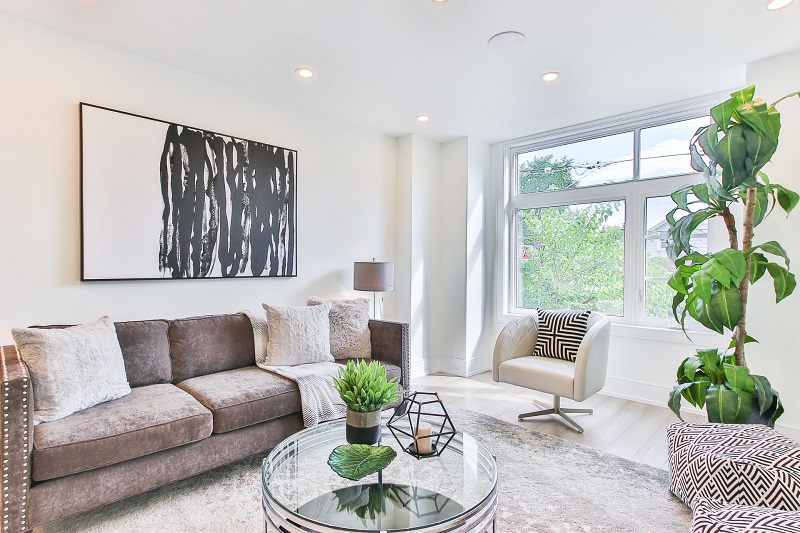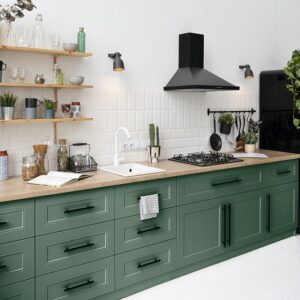There’s no denying it; designing can be overpowering, regardless of whether you center around only each room in turn. The simple answer is to employ an architect to help you. However, that is not generally a choice—particularly assuming you’re on a careful spending plan. However, do you realize what is accessible? And that is precisely what we like to do when we need a charming living room that didn’t cost our life investment funds or require five years to outfit, remove wall between kitchen and living room before and after the most helpful method for adorning a room is to focus on five major parts of putting things in place.
“When planning your living space, it’s essential to get the ‘enormous’ pieces right the initial time,” says fashioner Maggie Griffin of Maggie Griffin Design. “We generally tell our customers, cry once, and purchase quality pieces.” Honestly, assuming you establish a robust framework for a room, you can stress over adding that last layer of character later, just by gathering things you love as you experience life. Thus, this is what a couple of fashioners need to say concerning what you should purchase now so you can check “living room and kitchen” off of your embellishing plan for the day.
1. Start From the Ground Up
Living Room and Kitchen
Quite a long time ago, we expected mats in a real sense existed to forestall cold feet. And sure, they’re the place where you can add a trace of example and shading, assuming you’re into those things. Be that as it may, it turns out mats work a ton harder, plan-wise, in the grand plan of a room. “They ground the room, characterize the space, assist with commotion levels, and cause the room to feel comfortable,” clarifies the creator.
Everything goes with mats, and you can track down something very realistic and designed, assuming that is your style, or go with a more apparent finished piece. Regardless, the floor covering is the thing that will characterize the temperament for your space, says Griffin. Her top-pick? A huge bound thick woven jute layered with an oushak.
2. Invest in Your Sofa comfortable living room and kitchen accessories
“You must conclude how you will live in the space and in case you’re a sectional or sofa type,” Moore notes. “Your seating will be your greatest interest in this room, and that is how it ought to be.” Comfort might be the main thing to you, so a slouchy sectional may be perfect. Or then again, perhaps you need something more smoothed out or custom-fitted because you engage a ton and need a more proper arrangement.
In any case, you’ll most likely need something that “fits the room appropriately, is agreeable, and holds its shape,” proposes architect Abbe Fenimore of Studio Ten 25. Griffin suggests execution textures for upholstery, and as a rule, it’s more secure to go with a firm couch and stir it up with an example for your side seats. Try not to hold back here. These pieces should endure many years and are what individuals will see first when they venture into your room.
3. Get Creative With Surfaces living room and kitchen
We as a whole need a surface for our tidbits and beverages, so a footstool is an easy decision. “A footstool is functional, helps keep your controllers coordinated, and adds style, particularly when you enhance with end table books and stylistic layout,” Moore adds.
Greater isn’t, in every case, better. Assuming that you have a little space, consider an option in contrast to a customary end table, for example, a couple of drum stools or a little vintage trunk. However, know your cutoff points. If you can’t stand water rings, marble isn’t really for you. Wood or glass are consistently sure things.
4. Don’t Forget Window Treatments living room and kitchen.
“Relax the vibe of the room with a curtain,” Moore energizes. You probably won’t have the opportunity or cash for custom draperies. However, there are a lot of fundamental, off-the-rack shades and window hangings that will arrange your room and cause it to feel wrapped up. You need something that will impede somewhat light and give you some security, particularly in case you live on a bustling road. Extra focuses, assuming you can observe a print that doesn’t overpower the room.
Regarding drapes, stick to lighter shades, which radiate the deception of a bigger space.
5. Establish a Lighting Scheme
“Lights give delicate lighting rather than the unforgiving glare of overhead lighting,” Moore proceeds. “They likewise add character and aspect to the room.” You’ll presumably need a blend here: chandelier or pendant, table lights, floor lights, even a divider mounted light or two.
“Numerous light sources can help you through changing seasons and engaging visitors,” says Griffin. “Little can lights can be coordinated toward astounding craftsmanship, while thick lights on nightstands make feel.” You’ll be well headed to a lovely and helpful living room if you start with these pieces. The key isn’t to sweat the little stuff too early or get hindered in the subtleties before laying the appropriate foundation.




